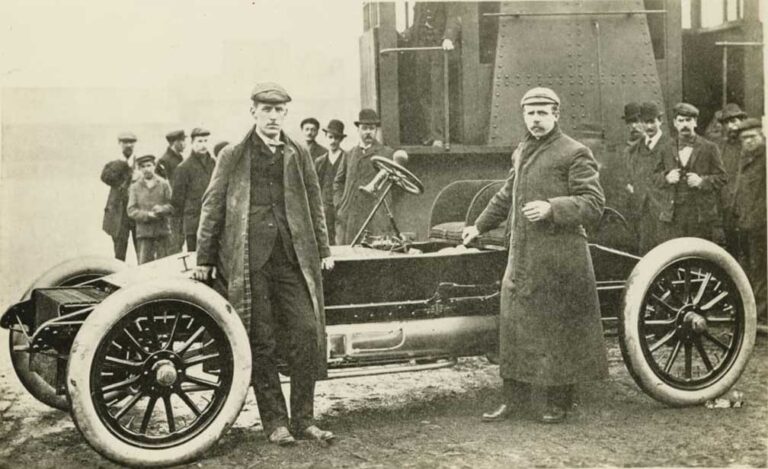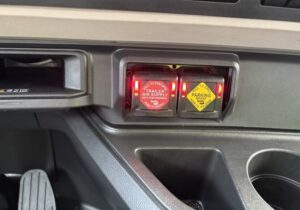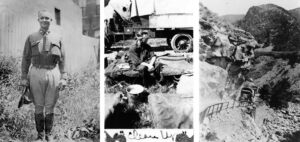Charles Fruehauf is widely credited as the father of the semi-trailer as it is used today in American trucking — and rightly so.
After all, the Fruehauf name is still emblazoned on trailers manufactured over a century later. The company was also the first to sell trailers as a specialty item and remained virtually uncontested for years.
However, nearly two decades before Fruehauf invented a device to haul a friend’s boat to the lake, there was another pioneer working to develop a solution for transporting cargo (namely automobiles) — Alexander Winton.
Born in 1860 in Grangemouth, Scotland, to a marine engineer, Winton initially followed in his father’s footsteps. After emigrating to the U.S. in 1879, Winton spent his first five years in his new country working in the iron and marine engineering business.
Several years later, in 1891, he entered the bicycle business and six years after that he opened the Winton Motor Carriage Co., where he began to produce automobiles. In fact, to prove his vehicle’s worth, he took one of the first long-range car trips that same year, driving from Cleveland to New York, a jaunt that took nine days.
A few months later, Winton sold one of his automobiles to a Pennsylvanian for the price of $1,000. The transaction was among the first commercial sales of a car in U.S. history.
Winton’s early ventures were not completely successful, however.
Early on, he sold a car to James Ward Packard, who was disappointed with the vehicle’s quality. Winton challenged Packard to build a better car — and he did, founding the Packard Motor Car Co. in 1899.
Winton also was an avid racer of automobiles, and in one of his races he lost to Henry Ford — a man he had refused to hire. Of course, as history shows, Ford went on to develop the most successful automobile of its time, the Model T.
Meanwhile, Winton continued to develop his automobile business.
When Winton sold a car, he wanted it to reach its owner in pristine condition, with absolutely no mileage. That precluded him from driving cars to their destinations; not only would doing so place wear and tear on the vehicle, but it would also add the cost of Winton having to secure a railroad ticket home.
So, in 1898, he developed a contraption to allow cars to be hauled to their destinations. Some refer to it as the first semi-trailer.
Winton’s “automobile hauler” was a cart pulled by a modified short-wheeled automobile. The trailer’s platform rested on top of a rear engine with the end of trailer supported by two wheels. According to a description provided by Great Western Transportation:
“The platform could only hold one automobile. Before the cart was mounted onto the pulling car, the automobile to be delivered was wheeled onto the ramp of the cart and fastened to the platform. The edge of the platform resting on the ground was then elevated and attached to the top of the trunk of the pulling vehicle. Today, a flatbed trailer known as an RGN, removable gooseneck, uses the same principle of being driven onto and then hitched to the tractor.”
While Winton had indeed invented an early version of the semi-trailer, he only manufactured a few of the contraptions, preferring to remain in the automobile business.
Winton left the pursuit of trailer design to others, including Charles Fruehauf, who produced his first trailer in 1914. Other inventors who pioneered trailers were John C. Edebrock in 1918 and George Cassens in the 1920s.
By 1903, Winton had completely abandoned commercial trailer manufacturing, instead operating a motor carriage plant in Cleveland, Ohio. The facility covered 13 acres and employed 1,200 workers.
In 1912, he founded the Winton Gas Engine and Manufacturing Co. which built engines for a variety of uses — including a return to Winton’s first job when he invented a marine engine design. The company then shifted its emphasis to diesel engines, producing them for both marine and locomotive applications. In 1930, Winton sold his company to General Motors.
As noted earlier, Winton once lost a race to Henry Ford, a future competitor in the automobile business. Winton took advantage of the popularity of auto racing to promote his company and encourage advancing technology.
His race cars, all dubbed the “Bullet” became well known worldwide. In fact, Bullet No. 1 was the first car to win a sanctioned race on Daytona Beach, adjacent to the speedway that hosts NASCAR’s Daytona 500 today.
Barney Oldfield became one of Winton’s best-known drivers, competing with the Bullet in various races across the U.S. in the early 20th century. In one 1904 testing session, Oldfield drove Bullet No. 2 at 80 mph at Daytona Beach — a near-record speed at the time.
During his lifetime, Winton patented nearly 100 inventions; however, he was not recognized for his efforts to the extent Charles Fruehauf has been recognized for commercializing the semi-trailer. Winton died 1932, but it was not until 2005 that he was inducted into the Automotive Hall of Fame. Then, in 2006, he was inducted into the National Inventors Hall of Fame.
So, consider trailer history as you wish.
Do accolades belong to Charles Fruehauf, the man who made the use of a semi-trailer widespread and whose name remains on the road today? Or should Alexander Winton receive his due as the first inventor of a trailer for use in automobile delivery?
Since retiring from a career as an outdoor recreation professional from the State of Arkansas, Kris Rutherford has worked as a freelance writer and, with his wife, owns and publishes a small Northeast Texas newspaper, The Roxton Progress. Kris has worked as a ghostwriter and editor and has authored seven books of his own. He became interested in the trucking industry as a child in the 1970s when his family traveled the interstates twice a year between their home in Maine and their native Texas. He has been a classic country music enthusiast since the age of nine when he developed a special interest in trucking songs.















